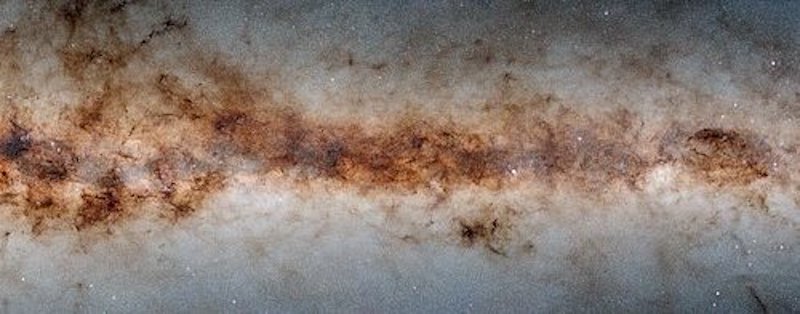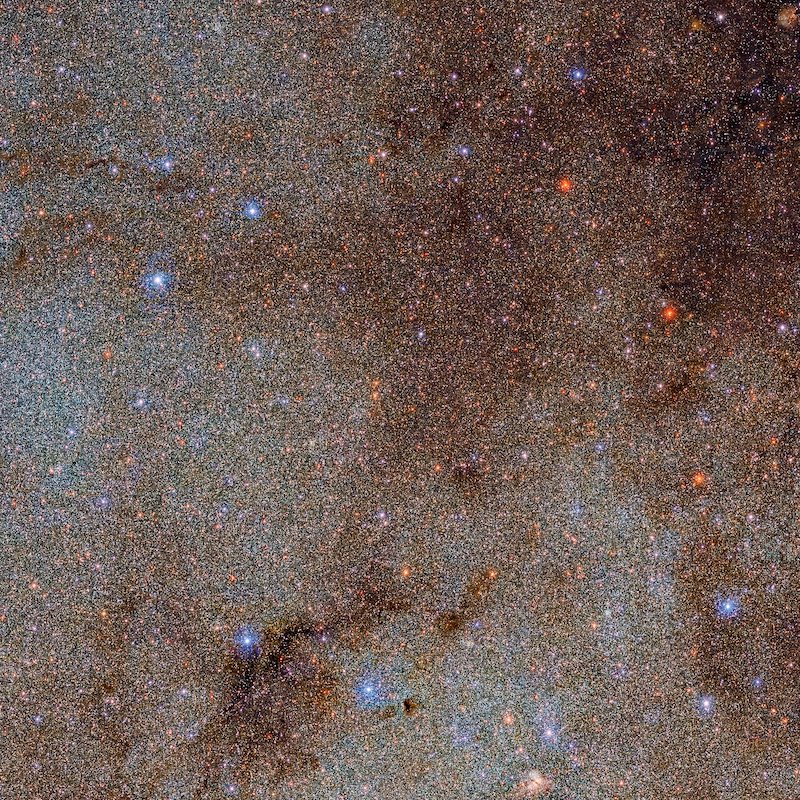
Our Milky Way galaxy is a colossal island of billions of stars, planets, nebulae and other objects. Accordingly, mapping and seeing all of them is definitely not easy. But on January 18, 2023, astronomers with NOIRLab released a stunning new survey of the southern galactic plane of the Milky Way. Called the Dark Energy Camera Plane Survey (DECaPS2), it includes approximately 3.32 billion different objects and took two years to complete. It is the second dataset released from this survey.
The researchers published the peer-reviewed results of the survey in The Astrophysical Journal Supplement Series on January 18, 2023.
The Dark Energy Camera Plane Survey (DECapS2)
The astronomers used the Dark Energy Camera (DECam) on the Víctor M. Blanco 4-meter Telescope at the Cerro Tololo Inter-American Observatory (CTIO) in Chile to conduct the survey. CTIO is a program of NOIRLab, which is part of the National Science Foundation (NSF). The location, at an altitude of 2,200 meters (7,200 feet), provides a great view of the southern galactic plane.
The survey includes observations in both optical (visible light) and near-infrared regions of the electromagnetic spectrum. This is actually the second batch of data released from this survey overall. Now, the new dataset is available to both scientists and the public.
Scientists released the initial dataset in 2017. With the new dataset, the survey overall covers 6.5% of the night sky and spans 130 degrees in length. To be sure, that may not sound like a lot, but it still includes 3.32 billion objects. Indeed, that also provides a sense of just how gargantuan our entire galaxy really is!
New Milky Way survey focuses on galactic plane
The galactic plane is the plane on which most of our disk-shaped galaxy’s mass is located. As an illustration, imagine if you viewed our galaxy edge-on and drew a horizontal line through the center. That’s the galactic plane. You can see it in the bright band in the image at the top of this article. It should not, however, be confused with the galactic equator. That, conversely, is an imaginary great circle that divides the equally imaginary celestial sphere into two equal halves.
The DECam is able to view stars and other objects in this plane in near-infrared. In fact, it can peer through much of the dust that obscures our view. In addition, the researchers used a unique data-processing approach, allowing them to better predict the background behind each star. This helps to better distinguish objects that may appear to be almost on top of each other. Andrew Saydjari, a researcher at the Harvard-Smithsonian Center for Astrophysics and lead author of the paper, said:
One of the main reasons for the success of DECaPS2 is that we simply pointed at a region with an extraordinarily high density of stars and were careful about identifying sources that appear nearly on top of each other. Doing so allowed us to produce the largest such catalog ever from a single camera, in terms of the number of objects observed.

360-degree panorama of Milky Way
The new survey also helped astronomers complete a 360-degree panorama of the Milky Way. The astronomers did this by combining the data with data from Pan-STARRS 1, another survey observed with the Hawaiian Pan-STARRS telescope. Co-author Edward Schlafly, a researcher at the AURA-managed Space Telescope Science Institute, said:
When combined with images from Pan-STARRS 1, DECaPS2 completes a 360-degree panoramic view of the Milky Way’s disk and additionally reaches much fainter stars. Pan-STARRS is a system for wide-field astronomical imaging developed and operated by the Institute for Astronomy at the University of Hawaii. Now, with this new survey, we can map the three-dimensional structure of the Milky Way’s stars and dust in unprecedented detail.
Debra Fischer, division director of Astronomical Sciences at the National Science Foundation, compared the new survey image to a group photo, saying:
This is quite a technical feat. Imagine a group photo of over three billion people and every single individual is recognizable! Astronomers will be poring over this detailed portrait of more than three billion stars in the Milky Way for decades to come. This is a fantastic example of what partnerships across federal agencies can achieve.
Bottom line: Astronomers at NOIRLab, using the Dark Energy Camera in Chile, have released a new Milky Way survey showing billions of objects in the galactic plane.
The post New Milky Way survey reveals billions of objects first appeared on EarthSky.
0 Commentaires